 W
WThere are several hundred languages in China. The predominant language is Standard Chinese, which is based on central Mandarin, but there are hundreds of related Chinese languages, collectively known as Hanyu, that are spoken by 92% of the population. The Chinese languages are typically divided into seven major language groups, and their study is a distinct academic discipline. They differ as much from each other morphologically and phonetically as do English, German and Danish, but meanwhile share the same writing system (Hanzi) and are mutually intelligible in written form. There are in addition approximately 300 minority languages spoken by the remaining 8% of the population of China. The ones with greatest state support are Mongolian, Tibetan, Uyghur and Zhuang.
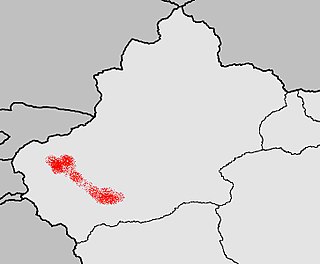 W
WÄynu is a Turkic cryptolect spoken in Western China. Some linguists call it a mixed language, having a mostly Turkic grammar, essentially Yugur, but a mainly Iranian vocabulary. Other linguists argue that it does not meet the technical requirements of a mixed language. It is spoken by the Äynu, a nomadic people, who use it to keep their communications secret from outsiders.
 W
WThe Bouyei language is a language spoken by the Bouyei ethnic group of Southern Guizhou Province, China. Classified as a member of the Northern Tai group in the Tai language branch of the Tai–Kadai language family, the language has over 2.5 million native speakers and is also used by the Giay people in some parts of Vietnam. There are native speakers living in France or the United States as well, which emigrated from China or Vietnam. About 98% of the native speakers are in China.
 W
WCantonese is a language within the Chinese (Sinitic) branch of the Sino-Tibetan languages originating from the city of Guangzhou and its surrounding area in Southeastern China. It is the traditional prestige variety of the Yue Chinese dialect group, which has over 80 million native speakers. While the term Cantonese specifically refers to the prestige variety, it is often used to refer to the entire Yue subgroup of Chinese, including related but largely mutually unintelligible languages and dialects such as Taishanese.
 W
WCentral Min, or Min Zhong, is a part of the Min group of varieties of Chinese. It is spoken in the valley of the Sha River in Sanming prefecture in the central mountain areas of Fujian, consisting of Yong'an, the urban area of Sanming and Sha County.
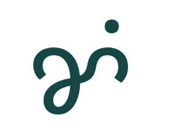 W
WCham is a Malayo-Polynesian language of the Austronesian family, spoken by the Chams of Southeast Asia. It is spoken primarily in the territory of the former Kingdom of Champa, which spanned modern Eastern Cambodia and Southern Vietnam. The Western variety is spoken by 220,000 people in Cambodia and 25,000 people in Vietnam. As for the Eastern variety, there are about 73,000 speakers in Vietnam, for a total of approximately 320,000 speakers.
 W
WChaoshan or Teo-Swa is a Southern Min language spoken by the Teochew people of the Chaoshan region of eastern Guangdong province, China, and by their diaspora around the world. It is closely related to Hokkien, with which it shares some cognates and phonology, though the two are largely mutually unintelligible.
 W
WChinese is a group of languages that form the Sinitic branch of the Sino-Tibetan languages, spoken by the ethnic Han Chinese majority and many minority ethnic groups in Greater China. About 1.3 billion people speak a variety of Chinese as their first language.
 W
WDatian Min is a Southern Min language spoken in Datian County, Sanming City, Fujian Province, China. It has been influenced by other Min languages, including Central Min, Eastern Min, Northern Min and Puxian Min.
 W
WE or Wuse/Wusehua is a Tai–Chinese mixed language spoken primarily in Rongshui Miao Autonomous County, Guangxi, China. It contains features of both Tai and Chinese varieties, generally adopting Chinese vocabulary into Tai grammar. E is a tonal language—distinguishing between seven tones—and contains a few rare phonemes: voiceless versions of the more common nasal consonants and alveolar lateral approximant.
 W
WEastern Min or Min Dong, is a branch of the Min group of Sinitic languages of China. The prestige form and most-cited representative form is the Fuzhou dialect, the speech of the capital of Fujian.
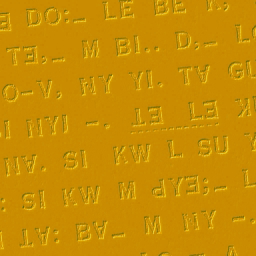 W
WThe Fraser or Old Lisu script, is an artificial script invented around 1915 by Sara Ba Thaw, a Karen preacher from Myanmar and improved by the missionary James O. Fraser, to write the Lisu language. It is a single-case (unicameral) alphabet. It was also used for the Naxi language, e.g. the 1932 Naxi Gospel of Mark and used in the Zaiwa or Atsi language e.g. the 1938 Atsi Gospel of Mark.
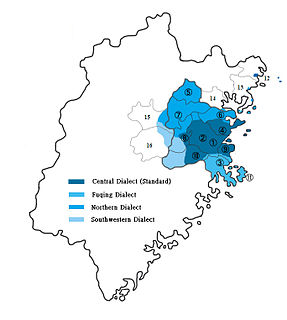 W
WThe Fuzhou dialect, also Foochow, Hokchew, Hok-chiu, or Fuzhounese, is the prestige variety of the Eastern Min branch of Min Chinese spoken mainly in the Mindong region of Eastern Fujian Province. Like many other varieties of Chinese, the Fuzhou dialect is dominated by monosyllabic morphemes that carry lexical tones, and has a mainly analytic syntax. While the Eastern Min branch it belongs to is relatively closer to Southern Min or Hokkien than to other Sinitic branches such as Mandarin, Wu Chinese or Hakka, they are still not mutually intelligible.
 W
WGepo is a Loloish language of Yunnan, China spoken by 100,000 people. The speakers' autonym is, while the "-po" of "Gepo" means 'people'. It is spoken in 6 villages of Fumin County, eastern Luquan County, and other adjacent counties to the northeast.
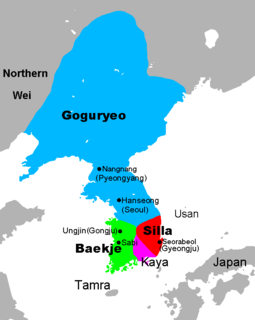 W
WThe Goguryeo language, or Koguryoan, was the language of the ancient kingdom of Goguryeo, one of the Three Kingdoms of Korea. Early Chinese histories state that it was similar to the languages of Buyeo, Okjeo and Ye, all of which are unattested. Lee Ki-Moon grouped these as the Puyŏ languages. The evidence for the language is limited and controversial.
 W
WGyalrong or rGyalrong, also rendered Jiarong, or sometimes Gyarung, is a subbranch of the Gyalrongic languages spoken by the Gyalrong people in Western Sichuan, China. Lai et al. (2020) refer to this group of languages as East Gyalrongic.
 W
WHakka is a language group of varieties of Chinese, spoken natively by the Hakka people throughout Southern China and Taiwan and throughout the diaspora areas of East Asia, Southeast Asia and in overseas Chinese communities around the world.
 W
WHmong / Mong is a dialect continuum of the West Hmongic branch of the Hmongic languages spoken by the Hmong People of Sichuan, Yunnan, Guizhou, Guangxi, Hainan, northern Vietnam, Thailand, and Laos. There are some 2.7 million speakers of varieties that are largely mutually intelligible, including over 280,000 Hmong Americans as of 2013. Over half of all Hmong speakers speak the various dialects in China, where the Dananshan (大南山) dialect forms the basis of the standard language. However, Hmong Daw (White) and Mong Njua (Green) are widely known only in Laos and the United States; Dananshan is more widely known in the native region of Hmong.
 W
WThe Hmongic also known as Miao languages include the various languages spoken by the Miao people, Pa-Hng, and the "Bunu" languages used by non-Mien-speaking Yao people.
 W
WHokkien is a Southern Min language originating from the Minnan region in the south-eastern part of Fujian Province in Southeastern Mainland China and spoken widely there. It is also spoken widely in Taiwan ; by the Chinese diaspora in Malaysia, Singapore, Indonesia, the Philippines and other parts of Southeast Asia; and by other overseas Chinese all over the world. The Hokkien 'dialects' are not all mutually intelligible, but they are held together by ethnolinguistic identity. Taiwanese Hokkien is, however, mutually intelligible with the 2 to 3 million speakers of the Amoy and Philippine dialects.
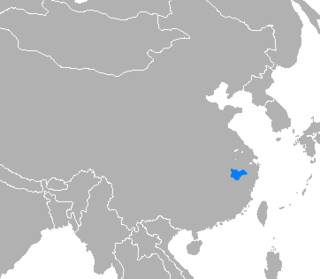 W
WHuizhou Chinese or Hui dialect, is a group of closely related Sinitic languages spoken over a small area in and around the historical region of Huizhou, in about ten or so mountainous counties in southern Anhui, plus a few more in neighbouring Zhejiang and Jiangxi.
 W
WThe Idu Mishmi language is a small language spoken by the Mishmi people in Dibang Valley district, Lower Dibang Valley district, Lohit district, East Siang district, Upper Siang district of the Indian state of Arunachal Pradesh and in Zayü County of the Tibet Autonomous Region, China. There were 8569 speakers in India in 1981 and 7000 speakers in China in 1994. It is considered an endangered language.
 W
WJin is a proposed group of varieties of Chinese spoken by roughly 63 million people in northern China, including most of Shanxi province, much of central Inner Mongolia, and adjoining areas in Hebei, Henan, and Shaanxi provinces. The status of Jin is disputed among linguists; some prefer to include it within Mandarin, but others set it apart as a closely related, but separate sister-group.
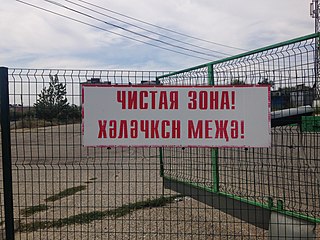 W
WKalmyk Oirat, commonly known as the Kalmyk language, is a register of the Oirat language, natively spoken by the Kalmyk people of Kalmykia, a federal subject of Russia. In Russia, it is the standard form of the Oirat language, which belongs to the Mongolic language family. The Kalmyk people of the Northwest Caspian Sea of Russia claim descent from the Oirats from Eurasia, who have also historically settled in Mongolia and Northwest China. According to UNESCO, the language is "Definitely endangered". According to the Russian census of 2010, there are 80,500 speakers of an ethnic population consisting of 183,000 people.
 W
WKazakh or Qazaq, is a Turkic language of the Kipchak branch spoken in Central Asia. It is closely related to Nogai, Kyrgyz and Karakalpak. Kazakh is the official language of Kazakhstan and a significant minority language in the Ili Kazakh Autonomous Prefecture in Xinjiang, China and in the Bayan-Ölgii Province of Mongolia. Kazakh is also spoken by many ethnic Kazakhs throughout the former Soviet Union, Germany, and Turkey.
 W
WKyowa-go or Xieheyu is either of two pidginized languages, one Japanese-based and one Chinese-based, that were spoken in Manchukuo in the 1930s and 1940s. They are also known as Kōa-go , Nichiman-go , and Daitōa-go .
 W
WKyrgyz is a Turkic language of the Kipchak branch spoken in Central Asia. Kyrgyz is the official language of Kyrgyzstan and a significant minority language in the Kizilsu Kyrgyz Autonomous Prefecture in Xinjiang, China and in the Gorno-Badakhshan Autonomous Province of Tajikistan. There is a very high level of mutual intelligibility between Kyrgyz, Kazakh and Altay.
 W
WLhasa Tibetan, or Standard Tibetan, is the Tibetan dialect spoken by educated people of Lhasa, the capital of the Tibetan Autonomous Region of China. It is an official language of the Tibet Autonomous Region.
 W
WLizu is a Qiangic language spoken in Western Sichuan, China. There are 4,000 speakers according to Sun (1982) and 7,000 speakers according to Chirkova (2008). Muli, where Lizu is spoken, is a multi-ethnic and multi-lingual county and Lizu has been historically influenced by Mandarin Chinese.
 W
WMandarin is a group of Sinitic (Chinese) languages natively spoken across most of northern and southwestern China. The group includes the Beijing dialect, the basis of the phonology of Standard Chinese. Because Mandarin originated in North China and most Mandarin dialects are found in the north, the group is sometimes referred to as Northern Chinese. Many varieties of Mandarin, such as those of the Southwest and the Lower Yangtze, are not mutually intelligible or are only partially intelligible with the standard language. Nevertheless, Mandarin is often placed first in lists of languages by number of native speakers.
 W
WThe Mienic or Yao languages are spoken by the Yao people of China, Vietnam, Laos, and Thailand.
 W
WThe Mongolic languages are a language family spoken by the Mongolic peoples in Eastern Europe, Central Asia, North Asia and East Asia, mostly in Mongolia and surrounding areas and in Kalmykia and Buryatia. The best-known member of this language family, Mongolian, is the primary language of most of the residents of Mongolia and the Mongol residents of Inner Mongolia, with an estimated 5.7+ million speakers.
 W
WNüshu is a syllabic script derived from Chinese characters that was used exclusively among women in Jiangyong County in Hunan province of southern China. Nüshu has been included in the Unicode Standard since June 2017.
 W
WOirat is a Mongolic language spoken by the descendants of Oirat Mongols, now forming parts of Mongols in China, Kalmyks in Russia and Mongolians. Largely mutually intelligible to other core Central Mongolic languages, scholars differ as to whether they regard Oirat as a distinct language or a major dialect of the Mongolian language. Oirat-speaking areas are scattered across the far west of Mongolia, the northwest of China and Russia's Caspian coast, where its major variety is Kalmyk. In China, it is spoken mainly in Xinjiang, but also among the Deed Mongol of Qinghai and Subei County in Gansu.
 W
WPalaung, also known as De'ang, is a Mon–Khmer dialect cluster spoken by over half a million people in Burma and neighboring countries. The Palaung people are divided into Palé, Rumai, and Shwe, and each of whom have their own language. The Riang languages are reported to be unintelligible or only understood with great difficulty by native speakers of the other Palaung languages.
 W
WPinghua is a pair of Sinitic languages spoken mainly in parts of the Guangxi Zhuang Autonomous Region, with some speakers in Hunan province. Pinghua is a trade language in some areas of Guangxi, where it is spoken as a second language by speakers of Zhuang languages. Some speakers of Pinghua are officially classified as Zhuang, and many are genetically distinct from most other Han Chinese. The northern subgroup of Pinghua is centered on Guilin and the southern subgroup around Nanning. Southern Pinghua has several notable features such as having four distinct checked tones, and using various loanwords from the Zhuang languages, such as the final particle wei for imperative sentences.
 W
WPromotion of Putonghua is a movement led by the government of China since the Communist Party came to the power. Currently, the Promotion of Putonghua is led by State Language Work Committee, a governing body which regulates language use on behalf of the People's Republic of China.
 W
WPuxian, also known as Pu-Xian Chinese, Puxian Min, Xinghua, Henghwa or Hinghwa, is a Sinitic language that forms a branch of Min Chinese.
 W
WThe Sarikoli language is a member of the Pamir subgroup of the Southeastern Iranian languages spoken by Tajiks in China. It is officially referred to in China as the "Tajik language", although it is different from the related Iranian language spoken in Tajikistan, which is considered a dialect of Persian.
 W
WSingpho is a dialect of the Jingpho language spoken by the Singpho people of Arunachal Pradesh and Assam. It is spoken by at least 3,000 people. "Singpho" is the local pronunciation of "Jingpho".
 W
WSouthern Min, Minnan or Banlam, is a group of linguistically similar and historically related Sinitic languages that form a branch of Min Chinese spoken in Fujian, most of Taiwan, Eastern Guangdong, Hainan, and Southern Zhejiang. The Minnan dialects are also spoken by descendants of emigrants from these areas in diaspora, most notably the Philippines, Indonesia, Malaysia, Singapore, San Francisco, Los Angeles and New York City. It is the most populous branch of Min Chinese, spoken by an estimated 48 million people in ca. 2017–2018.
 W
WSouthern Uzbek, also known as Afghan Uzbek, is the southern variant of the Uzbek language and an official language of Afghanistan where it is based and has up to 4.2 million speakers. It uses the Perso-Arabic writing system in contrast to the language variant of Uzbekistan. It uses the Pashto alphabet.
 W
WStandard Zhuang is the official standardized form of the Zhuang languages, which are a branch of the Northern Tai languages. Its pronunciation is based on that of the Yongbei Zhuang dialect of Shuangqiao Town in Wuming District, Guangxi with some influence from Fuliang, also in Wuming District, while its vocabulary is based mainly on northern dialects. The official standard covers both spoken and written Zhuang. It is the national standard of the Zhuang languages, though in Yunnan a local standard is used.
 W
WTajik, also called Tajiki Persian, Takiji, and Tadzhiki, is the variety of Persian spoken in Tajikistan and Uzbekistan by Tajik people. It is closely related to neighbouring Dari with which it forms a continuum of mutually intelligible varieties of the Persian language. Several scholars consider Tajik as a dialectal variety of Persian rather than a language on its own. The popularity of this conception of Tajik as a variety of Persian was such that, during the period in which Tajik intellectuals were trying to establish Tajik as a language separate from Persian, prominent intellectual Sadriddin Ayni counterargued that Tajik was not a "bastardised dialect" of Persian. The issue of whether Tajik and Persian are to be considered two dialects of a single language or two discrete languages has political sides to it.
 W
WThe Takpa or Dakpa language, Dakpakha, known in India as Tawang Monpa, is an East Bodish language spoken in the Tawang district of Arunachal Pradesh, claimed by Tibet as a part of Lho-kha Sa-khul, and in northern Trashigang District in eastern Bhutan, mainly in Kyaleng, Phongmed Gewog,, Dangpholeng and Lengkhar near Radi Gewog. Van Driem (2001) describes Takpa as the most divergent of Bhutan's East Bodish languages, though it shares many similarities with Bumthang. SIL reports that Takpa may be a dialect of the Brokpa language and that it been influenced by the Dzala language whereas Brokpa has not.
 W
WTangut is an extinct language in the Sino-Tibetan language family.
 W
WThe Tatar language is a Turkic language spoken by Tatars mainly located in modern Tatarstan, as well as Siberia. It should not be confused with the Crimean Tatar or Siberian Tatar, which are closely related but belong to different subgroups of the Kipchak languages.
 W
WThe Tibetic languages are a cluster of Tibeto-Burman languages descended from Old Tibetan, spoken across the Himalayan Massif in East and South Asia, including the Tibetan Plateau and the Himalayas in Baltistan, Ladakh, Nepal, Sikkim, Bhutan, Assam and Arunachal Pradesh. Classical Tibetan is a major regional literary language, particularly for its use in Buddhist literature.
 W
WThe Tocharian languages, also known as Arśi-Kuči, Agnean-Kuchean or Kuchean-Agnean, are an extinct branch of the Indo-European language family spoken by inhabitants of the Tarim Basin, the Tocharians. They are known from manuscripts dating from the 5th to the 8th century AD, which were found in oasis cities on the northern edge of the Tarim Basin and the Lop Desert. The discovery of this language family in the early 20th century contradicted the formerly prevalent idea of an east–west division of the Indo-European language family on the centum–satem isogloss, and prompted reinvigorated study of the family. Mistakenly identifying the authors with the Tokharoi people of ancient Bactria (Tokharistan), early authors called these languages "Tocharian". This naming has remained, although the names Agnean and Kuchean have been proposed as a replacement.
 W
WTuvan is a Turkic language spoken in the Republic of Tuva in South-Central Siberia in Russia. The language has borrowed a great number of roots from the Mongolian language, Tibetan and the Russian language. There are small diaspora groups of Tuvan people that speak distinct dialects of Tuvan in the People's Republic of China and in Mongolia.
 W
WThe Uyghur or Uighur language, is a Turkic language, written in a Uyghur Perso-Arabic script, with 10 to 15 million speakers, spoken primarily by the Uyghur people in the Xinjiang Uyghur Autonomous Region of Western China. Significant communities of Uyghur speakers are located in Kazakhstan, Kyrgyzstan and Uzbekistan and various other countries have Uyghur-speaking expatriate communities. Uyghur is an official language of the Xinjiang Uyghur Autonomous Region and is widely used in both social and official spheres, as well as in print, television and radio and is used as a common language by other ethnic minorities in Xinjiang.
 W
WUzbek is a Turkic language that is the first official and only declared national language of Uzbekistan. The language of Uzbeks is spoken by some 27 million native speakers in Uzbekistan, 3–4 million in Afghanistan, and around 5 million in the rest of Central Asia, making it the second-most widely spoken Turkic language after Turkish.
 W
WVietnamese is an Austroasiatic language that originated in Vietnam, where it is the national and official language. It is by far the most spoken Austroasiatic language with over 90 million native speakers, at least seven times more than Khmer, the next most spoken Austroasiatic language. Its vocabulary has had significant influence from Chinese and French. It is the native language of the Vietnamese (Kinh) people, as well as a second language or first language for other ethnic groups in Vietnam. As a result of emigration, Vietnamese speakers are also found in other parts of Southeast Asia, East Asia, North America, Europe, and Australia. Vietnamese has also been officially recognized as a minority language in the Czech Republic.
 W
WWakhi is an Indo-European language in the Eastern Iranian branch of the language family spoken today in Wakhan District, northern Afghanistan and also in Tajikistan, northern Pakistan and China.
 W
WThe Wu languages is a major group of Sinitic languages spoken primarily in Shanghai, Zhejiang Province and the part of Jiangsu Province south of the Yangtze River, which makes up the cultural region of Wu. The Suzhou dialect was the prestige dialect of Wu as of the 19th century and it formed the basis of Wu's koiné dialect, Shanghainese, at the turn of the 20th century. Speakers of various Wu languages sometimes inaccurately labelled their mother tongue as "Shanghainese" when introduced to foreigners. The languages of Northern Wu are mutually intelligible with each other, while those of Southern Wu are not.
 W
WXiang or Hsiang ; Changsha Xiang: sian1 y3, also known as Hunanese, is a group of linguistically similar and historically related Sinitic languages, spoken mainly in Hunan province but also in northern Guangxi and parts of neighboring Guizhou and Hubei provinces. Scholars divided Xiang into five subgroups, Chang-Yi, Lou-Shao, Hengzhou, Chen-Xu and Yong-Quan. Among those, Lou-shao, also known as Old Xiang, still exhibits the three-way distinction of Middle Chinese obstruents, preserving the voiced stops, fricatives, and affricates. Xiang has also been heavily influenced by Mandarin, which adjoins three of the four sides of the Xiang speaking territory, and Gan in Jiangxi Province, from where a large population immigrated to Hunan during the Ming Dynasty.
 W
WYang Huanyi, a resident of Jiangyong County, Hunan province, was known as the last proficient speaker and writer of Nüshu script. Many people believe the language originated in Jiangyong County. She was the last person who could natively recognize, read, sing and write Nüshu, meaning that, after her death, only researchers have these skills.
 W
WYongbei Zhuang is a Zhuang variety including the dialects of Yongning North, Binyang, Hengxian, and Pingguo dialects. 'Yongbei' 邕北 is Chinese and here means North of the Yongjiang river; in other contexts it can stand for the north of Yongning County, or Yongning North.
 W
WThe Zhuang languages are any of more than a dozen Tai languages spoken by the Zhuang people of Southern China in the province of Guangxi and adjacent parts of Yunnan and Guangdong. The Zhuang languages do not form a monophyletic linguistic unit, as northern and southern Zhuang languages are more closely related to other Tai languages than to each other. Northern Zhuang languages form a dialect continuum with Northern Tai varieties across the provincial border in Guizhou, which are designated as Bouyei, whereas Southern Zhuang languages form another dialect continuum with Central Tai varieties such as Nung, Tay and Caolan in Vietnam. Standard Zhuang is based on the Northern Zhuang dialect of Wuming.